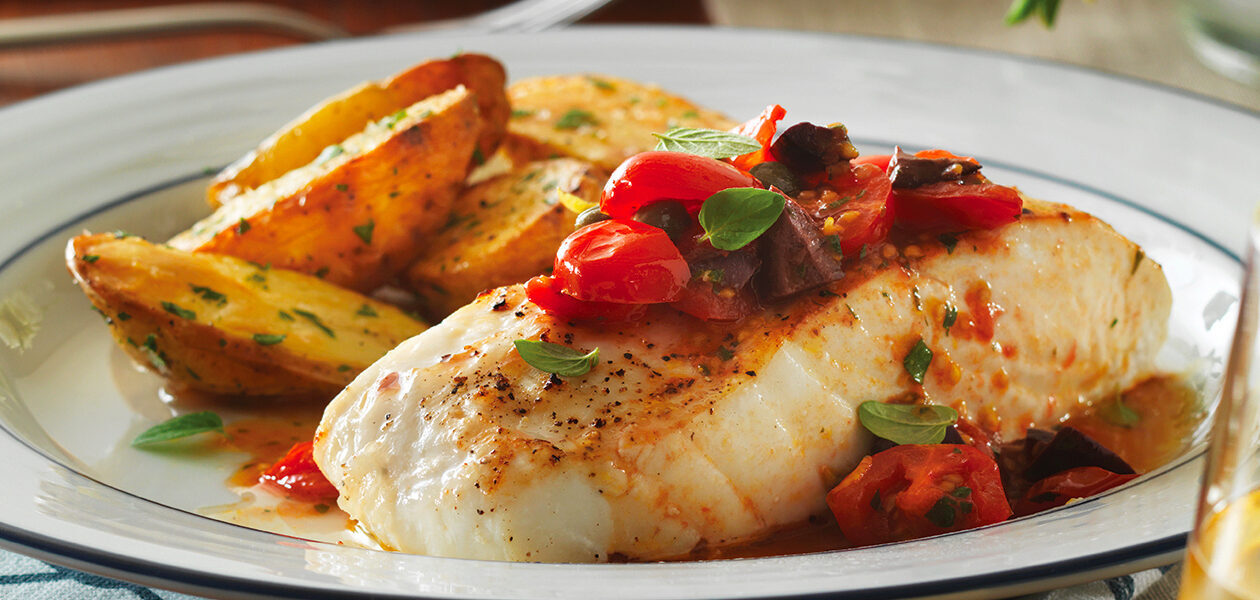With our proven tips and techniques under your belt, you’ll be confident and eager to cook delicious fish more often.
Want to cook fish more often but find the process a little daunting? Not anymore! This handy guide will help build your confidence so you won’t think twice about putting fish on your shopping list. Here’s everything you need to know about preparing, cooking and serving it.
How to Thaw Safely
Unless the recipe or package instructions say otherwise, frozen fish needs to be thawed before cooking. Simply transfer it from freezer to fridge the night before you plan to cook it, and it will be thawed by dinnertime. If you forgot to take it out, don’t worry! There’s a quick fix. Simply put the fish in a re-sealable freezer bag, push out the air and seal. Place it in a large bowl of cold water and weigh it down with a plate. Keep the cold water running gently into the bowl continuously during the thawing process; thin fillets will be ready in roughly 20 minutes, and thicker fish such as salmon could take up to one hour.
How to Prep
While most fish arrives at the store cleaned, portioned and ready to cook, you might find the occasional stray bone. Pin bones run above the backbone in the first half of the fillet, and sometimes a few are left behind. Using clean needle-nose pliers or tweezers, grab the bone and pull it toward the thicker end of the fillet (where the head used to be).
Fish scales are usually removed too, but once in a while you’ll still find a few. If you plan on eating the skin, quickly scrape the scales off with the back of a chef’s knife. And it’s always a good idea to thoroughly pat fish dry with a paper towel before cooking. It removes excess moisture for better browning and crispier skin.
How to Cook
- Broiling: For thin fish such as sole or rainbow trout, broiling is the way to go. Use a heavy-duty baking sheet lined with foil for easy cleanup, and broil it on the top rack. For a crispy crust, top the fish with panko breadcrumbs mixed with a little melted butter. Recipe: Broiled Dijon Crusted Sole with Lemons
- Steaming: Baking fish wrapped in parchment paper is a French technique called en papillote. It works best with thick cuts of fish, such as steaks and meaty fillets. The addition of thinly sliced vegetables, herbs, spices and maybe a splash of wine allows the fish to steam as it bakes, so it will stay moist and succulent. It’s easiest to fold the parchment over the fish and aromatics, and then trim and crimp for a tight seal.
- Roasting: For thick fillets such as cod, halibut and salmon, it doesn’t get much easier than putting the fish in a shallow baking dish and throwing it in a hot oven. For extra flavour, season the fillets with a spice rub, brush them with a glaze or sprinkle chopped herbs and lemon zest over top. Recipe: Roasted Cod with Capers, Olives & Tomatoes
- Frying: Medium-thick fish fillets, such as tilapia, are terrific pan-fried in a non-stick pan with a neutral vegetable or olive oil. When the edges of the fish have lost their raw colour, it’s time to flip. Slide a long, thin spatula underneath and use tongs in the other hand to steady the fillet as you turn it over. Recipe: Brown Butter Tilapia with Capers
- Grilling: In warm weather, nothing beats grilled fish. This technique works best with thick, meaty fish, such as salmon, swordfish and tuna. Just make sure to thoroughly clean and oil your grate so the food doesn’t stick. Brush the fish with olive oil, grill over medium-high heat, and use a metal spatula and tongs to flip it. For a smoky note, grill fish on a cedar Compliments Grilling Plank. Recipes: Grilled Halibut Steaks with Basil-Garlic Butter and Maple-Mustard Planked Salmon
How to Tell When It’s Done
The easiest way to tell whether fish is done is to insert the tip of a paring knife into the thickest part of the fillet, along the natural grain. Pull it back — if the flesh is opaque all the way through, it’s ready! You can also tell by pressing the meatiest part with your fingertip – it should be firm with a little give, like touching the tip of your nose. Still not sure? An instant-read thermometer inserted into the thickest part should read 158°F (70°C). If your fish isn’t quite done, continue cooking but check regularly, as the window between slightly underdone and fully cooked is short.
How to Dress It Up
In general, fish is excellent served simply with a sprinkle of fresh herbs (such as parsley, tarragon or dill), a drizzle of good olive oil and a squeeze of lemon. You can also whip up a quick sauce, such as our classic Homemade Tartar Sauce or easy Grape Tomato Salsa. Or keep a jar of Compliments Pesto in the pantry — it’s fantastic with fish.

